The 18th Century Drawing Room, History
Unlike the excess inspired by the Gilded Age and Industrialism, the decor of the 18th century drawing room reflected the Enlightenment-era shift toward politeness, conversation, and social ritual. The space would serve for tea services, musical performances, card games, and refined discourse.
This style in the United States often favored Georgian or Neoclassism elements, moving toward a lighter coloring and uniformity in the space. The room was designed as a means to impress guests with walls featuring intricate plaster detailing, silk coverings, mirrors, and paintings. The positioning of the furniture prioritized comfort and elevated conversation, demonstrating the merit and morals of the family within.
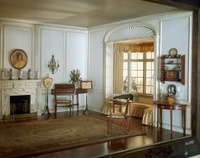
An interior photograph of a Drawing room by the Art Institute of Chicago.

A photograph of a Drawing room in the Georgian House. Carly Brown.
Additionally, there is also a discussion about the gendered aspects of this room. According to the Hammond Harwood House’s history on Jane Austen drawing rooms, these spaces were also more commonly used by women of the household, as the men would remain within the dining room or retire to a smoking or billiard room while the women would remove to this secondary space to take up creative work, such as needlepoint, or continue conversation.
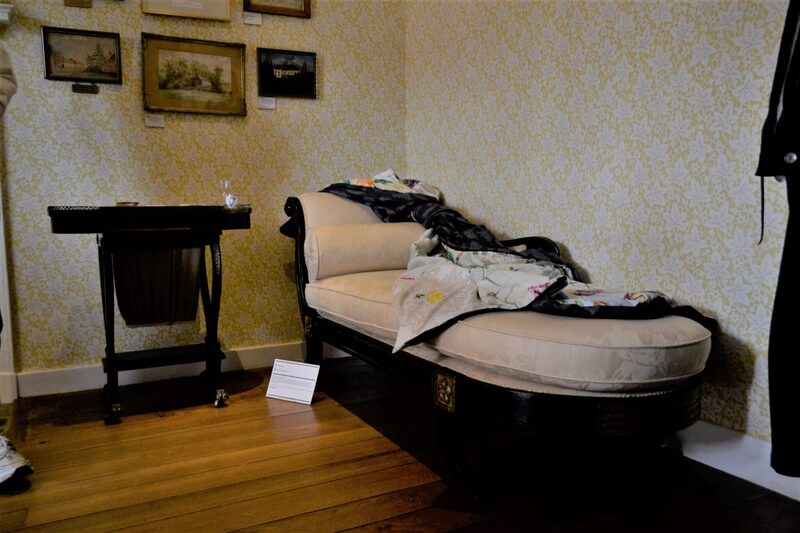
Jane Austen Drawing Room, displaying textile art by Chea Smart, Photograph, ca. 2022. Jane Austen’s House; ACD Sept. 2025
According to Eleanor John, a Regional Furniture Society historical writer who studied the inventory of 1740s-1800s era drawing rooms, the decor of these rooms was found to be “remarkably consistent" and the patterns reveal that there was "a recognised convention for the furnishing of this type of room which was closely adhered to.”
John details some of the inventories she gathered and itemizes the data pulled from them to further explain the expectations of the room style:
“All feature curtains and carpets and a suite of chairs; most have a sofa and card tables, the latter either described as a pair or two. The absences are potentially equally informative. None feature clocks, beds or case furniture. Only one has a dining table and none of the others have objects associated with eating. Tea things appear in 3 out of 8 of the drawing rooms. Notably there are no pillar and claw tables, whereas they are fairly common in parlours and dining rooms.”
Two inventories in particular that John analyzed, John Jackson (1786, pps. 143-144) and George Blachford (1793, pps.145-146), reveal how Fisher replicated some of these miniature items to be included in her dollhouse's 18th century drawing room. The furniture style is particularly easy to spot as she includes "Two Elbow Chairs the Same [meaning Mahogany] AND Elbow Chairs Cane Seats, with Cushions" within the model.
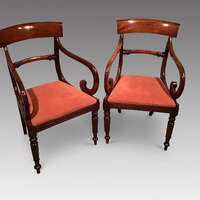
Pair of Mahogany Elbow Chairs Antique Boutique; ACD Sept. 2025
A Large China Jarr (sic) and Cover AND
A Bright Steel Stove Steel Cut fender Shovel, Tongs & Poker
The decorations and amusements are also present with ornate vases scattered around the room artfully. Fisher even constructed a miniature chess table, highlighting how the period's cultural focus on intellectual stimulation would influence the developing interior design!
These minatures show the attention to craftsmanship for the style that Mrs. Fisher diligently honed.
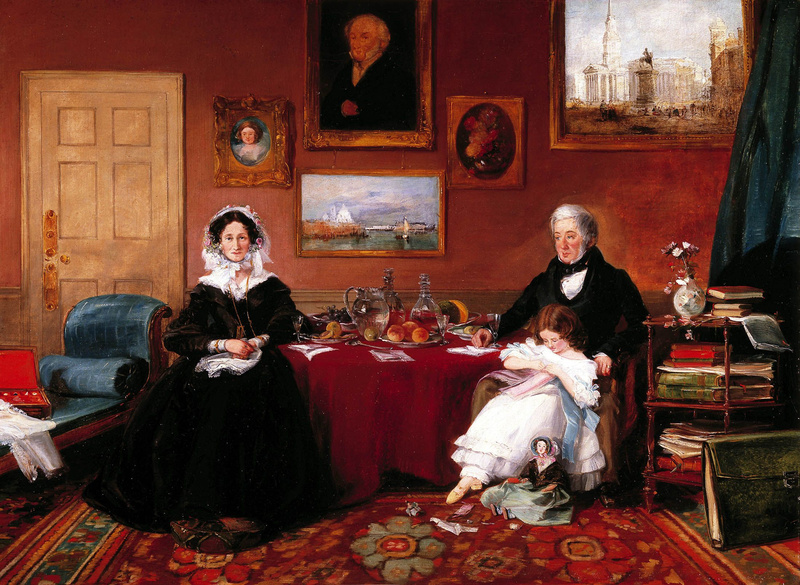
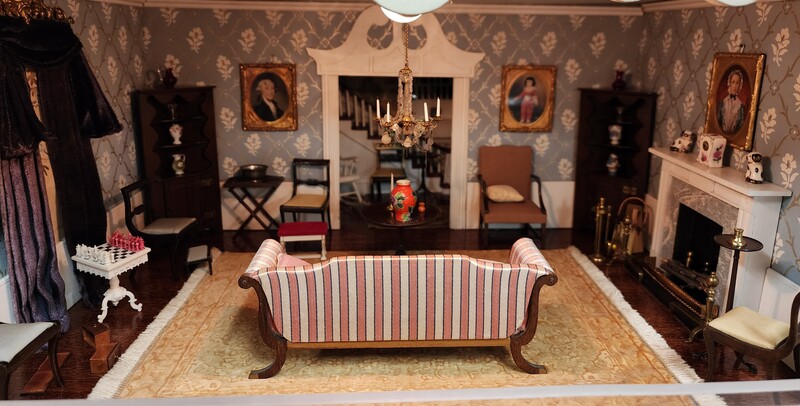
![<a href="/omeka/items/browse?advanced%5B0%5D%5Belement_id%5D=50&advanced%5B0%5D%5Btype%5D=is+exactly&advanced%5B0%5D%5Bterms%5D=Two+of+the+Mahogany+Chairs+in+Mrs.+Fisher%27s+Drawing+room%2C+by+Mrs.+Fisher%2C+%5Bca.+1940s-1950s%5D">Two of the Mahogany Chairs in Mrs. Fisher's Drawing room, by Mrs. Fisher, [ca. 1940s-1950s]</a> <a href="/omeka/items/browse?advanced%5B0%5D%5Belement_id%5D=50&advanced%5B0%5D%5Btype%5D=is+exactly&advanced%5B0%5D%5Bterms%5D=Two+of+the+Mahogany+Chairs+in+Mrs.+Fisher%27s+Drawing+room%2C+by+Mrs.+Fisher%2C+%5Bca.+1940s-1950s%5D">Two of the Mahogany Chairs in Mrs. Fisher's Drawing room, by Mrs. Fisher, [ca. 1940s-1950s]</a>](https://omeka.wilkes.edu/omeka/files/square_thumbnails/9c3eae08aaeb424024e3ec963b74ec0d.jpg)
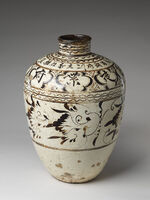
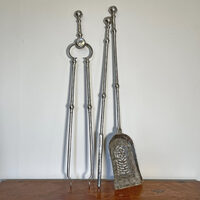
![<a href="/omeka/items/browse?advanced%5B0%5D%5Belement_id%5D=50&advanced%5B0%5D%5Btype%5D=is+exactly&advanced%5B0%5D%5Bterms%5D=Two+Photographs+of+Mrs+Fisher%27s+Recreations+of+Decorative+Vases+and+Fireplace+Tools%2C+by+Mrs.+Fisher%2C+%5Bca.1940s-1950s%5D">Two Photographs of Mrs Fisher's Recreations of Decorative Vases and Fireplace Tools, by Mrs. Fisher, [ca.1940s-1950s]</a> <a href="/omeka/items/browse?advanced%5B0%5D%5Belement_id%5D=50&advanced%5B0%5D%5Btype%5D=is+exactly&advanced%5B0%5D%5Bterms%5D=Two+Photographs+of+Mrs+Fisher%27s+Recreations+of+Decorative+Vases+and+Fireplace+Tools%2C+by+Mrs.+Fisher%2C+%5Bca.1940s-1950s%5D">Two Photographs of Mrs Fisher's Recreations of Decorative Vases and Fireplace Tools, by Mrs. Fisher, [ca.1940s-1950s]</a>](https://omeka.wilkes.edu/omeka/files/fullsize/67577ecfd9b7b64d1345ccc8dff46dd5.jpg)
![<a href="/omeka/items/browse?advanced%5B0%5D%5Belement_id%5D=50&advanced%5B0%5D%5Btype%5D=is+exactly&advanced%5B0%5D%5Bterms%5D=A+Zoom+Capture+of+the+Vase+and+Embellished+Chess+Table+in+the+Drawing+Room%2C+by+Mrs.+Fisher%2C+%5Bca.+1940s-1950s%5D">A Zoom Capture of the Vase and Embellished Chess Table in the Drawing Room, by Mrs. Fisher, [ca. 1940s-1950s]</a> <a href="/omeka/items/browse?advanced%5B0%5D%5Belement_id%5D=50&advanced%5B0%5D%5Btype%5D=is+exactly&advanced%5B0%5D%5Bterms%5D=A+Zoom+Capture+of+the+Vase+and+Embellished+Chess+Table+in+the+Drawing+Room%2C+by+Mrs.+Fisher%2C+%5Bca.+1940s-1950s%5D">A Zoom Capture of the Vase and Embellished Chess Table in the Drawing Room, by Mrs. Fisher, [ca. 1940s-1950s]</a>](https://omeka.wilkes.edu/omeka/files/fullsize/0bdd8006e7335a59da5d1459838ac864.jpg)